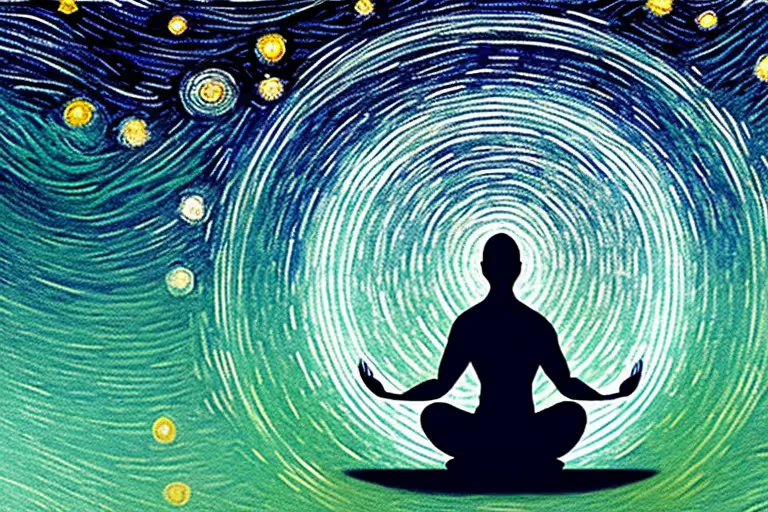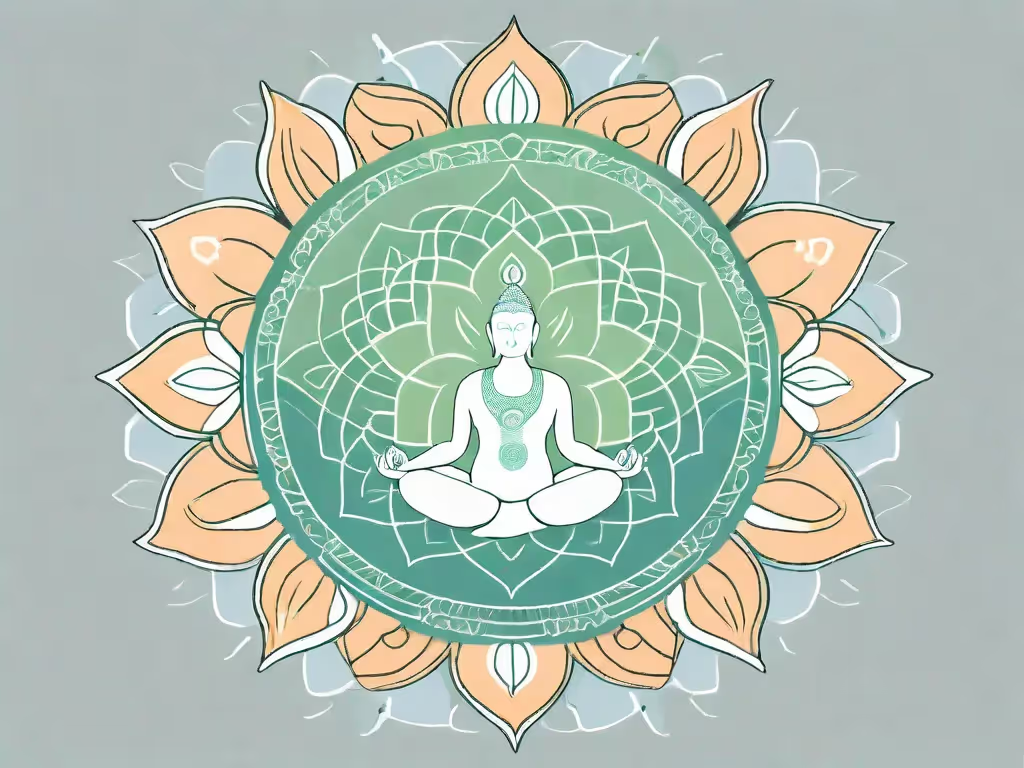The word meditation covers a lot of ground. For many, the word summons an image of a person sitting in a comfortable cross-legged position with closed eyes and a straight spine. For others, it means listening to a visualization before bed. Whatever you envision is correct, as are other interpretations.
At a foundational level, meditation means a practice of focused attention and mindfulness, but when we begin to investigate further, we find thousands of meditations to choose from. If you are new to meditation, it can be overwhelming. Even though I've been meditating for over fifteen years, I've only tapped the surface of the vast meditation practices.
As you can imagine, we will not cover everything here, but the meditation styles explored below are starting points and the type of meditation that appeals to you may change at different stages in your life. Below are various styles of meditation you can explore.
“The whole path of mindfulness is this: Whatever you are doing, be aware of it.” -Dipa Ma
Why Meditate?
Any meditation will support your ability to find equilibrium and an ability to incorporate mindfulness into your daily life, but your goals and experience should be considered. While there are meditations to improve focus and concentration, reach a certain goal, reduce stress, or ease pain, there is a technique that will work for you.
When practicing any of the following meditations, I recommend determining a length of time that is practical and realistic for you. If you are new to meditation, this can be as few as five minutes and seasoned practitioners experimenting with other styles might go as long as an hour or more.
Before experimenting with meditation (and I implore you to try one of the following, rather than just read the article), begin by determining the amount of time you'd like to dedicate and finding a comfortable position in a space where you will not be interrupted. Once you are ready, pick one of the following simple practices.
Categories of Meditation
Concentration Meditation
With concentration meditation, the idea is to focus on a single point or object. Once you've determined where to meditate, you can pick whatever is in front of you to guide your concentration meditation. This can be a spot on the wall, a keepsake, or a place on the floor just a few feet in front of the body. You may also light a candle and gaze into the flame. Concentration meditation can also be used with a mantra, which is a phrase or word that you repeat and focus on.
Tip: What you pick is not as important as the practice itself.
Once you pick your item and set your timer, soften your gaze as you settle it on this object. Begin to breathe steadily and focus on the object to the exclusion of all else. When you mind wanders, no problem; simply bring it back to the object. Continue for the full time. Concentration meditation is one of the most studied of the varied practices.
Vipassana meditation
Vipassana meditation is a specific type of concentration meditation that originated in India and is said to be traced back to Buddha. This practice is often taught formally in a traditional manner on retreat wherein you commit to "no harm" toward self or others. After this commitment, known as sila, the meditating sessions begin with focus on the breath. Once a person has mastered the practice of breath meditation, they can begin to focus on the mind and awareness itself.
Even though it is often practiced in groups and with a teacher, you can learn the fundamentals of Vipassana meditation from home. Guided Vipassana meditations can be a good place to begin, as can those who are silent, and use a bell to signal every few minutes to remind the practitioner to return focus to the breath or the awareness and mind itself. The Vipassana technique lends itself to long meditation sessions and can be a good practice if you seek to expand your practice.
Mindfulness Meditation
Mindfulness meditation can comprise any meditation, but at its core, it means simply meditating by observing thoughts without judgment. This technique can be Include practices like body scans, where you focus on noticing each part of the body one by one, or breathing awareness where total attention and compassion are centered on the breathing quality, temperature, cadence, and sensations. We find mindfulness by living in the present moment without labeling that moment as good or bad. We greet what is with compassion and awareness.
“Meditation isn’t about what’s happening; it’s about how you relate to what’s happening.” -Sharon Salzberg
Guided Meditation
Guided meditations are led by a guide or teacher; these practices often involve visualizations, such as imagining light expanding from your heart or imagining your body's tension melting away. Other visualizations may be utilized in manifestation practices, such as visualizing with awareness a big speech going well. Visualizations are often used by athletes to hone their practice and help them to focus during high-stress scenarios. This vision-based meditation is focused on helping you to achieve your goals.
“Undisturbed calmness of mind is attained by cultivating friendliness toward the happy, compassion for the unhappy, delight in the virtuous, and indifference toward the wicked.” - Patanjali
Movement Meditation
Yoga, tai chi, and qigong can all be ways of Incorporating physical activity and meditation. Because these practices are about positioning the body in new poses and harmonizing movement with the breath, they can be practiced as moving meditations. With the right focus, you can bring meditative awareness to any slow movement merely by zooming into the nuances of the body.
“Meditation is a way for nourishing and blossoming the divinity within you.” - Amit Ray
Loving-Kindness Meditation
My favorite type of meditation is focused on loving-kindness. In this practice, you focus on sending love and well wishes to loved ones, people you barely know, and even those who irritate you. While there are different types of loving-kindness meditations, they are all focused on radical compassion for the beings of the world. This compassion can be directed toward the self, and many practitioners find this to be the hardest version. Here is a guided meditation on loving kindness. A short script for this practice is below.
Begin by getting into a comfortable position, closing your eyes or softening your gaze, and begin by imagining a loved one or teacher you admire. Repeat the following while imagining the words are coming true: "May [loved one's name] be happy; may they be healthy; may they live with ease."
After a few minutes, shift your attention to yourself. Wish yourself happy, healthy and easeful by picturing what that means for you while you internally repeat: "May I be happy; may I be healthy; may I live with ease."
Finally, imagine a person you have a difficult relationship with and wish them the same: May [person's name you don't like] be happy; may they be healthy; may they live with ease.
You can practice this for as long as you'd like, sending well wishes to as many people as you would like. This practice works incredibly well for me to release any stress around relationships and reinforce my ability to cultivate peace, even with difficult people or in difficult times.
Finding What Works for You
Choosing the perfect meditation style comes down to assessing your personal goals, experience, and preferences. For instance, if you seek to improve your focus, concentration practices such as Vipassana meditation can be particularly helpful due to the attention; whereas a body scan might help you to relax by focusing on sensations in the body.
You want to consider lifestyle and time availability. Don’t set unrealistic expectations; in fact, it’s better to set the bar low and see how it goes. If you seek to meditate for only 5 minutes, for instance, you might find that it proves enough or that you are incrementally able to increase your time. You might also find that the 5 minutes leads to 20 minutes.
Try various methods to see what resonates; if you have trouble, the best way to stay motivated is to find a community, online or in person. The form of meditation that works best for you might be found after attending classes or using apps to explore options and experiment with new methods. You can also find many online resources to guide you on your solo journey.
Ultimately, any meditation will be beneficial in your life. While certain practices have resonated with me at different times in my life, I have found meditation in every form a powerful way to handle extreme emotions, build my ability to be mindful, and learn more about how to reduce anxiety and stress. It has been one of the greatest discoveries of my life, and I am confident your meditation journey will serve you in unexpected ways.



.webp)







.avif)

%20(1).avif)


.avif)
.avif)
.webp)


.avif)


















































































































.avif)

















.svg)









